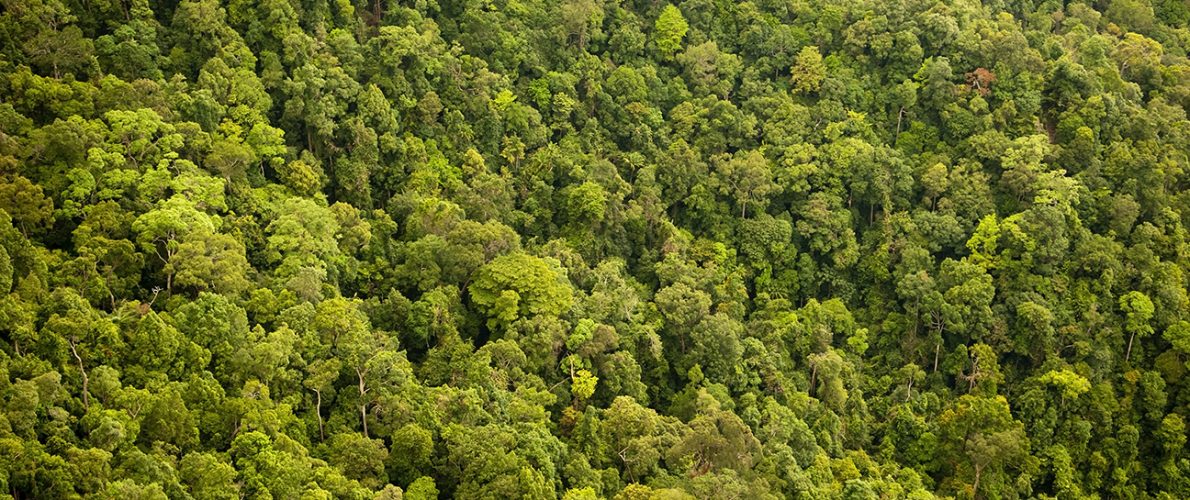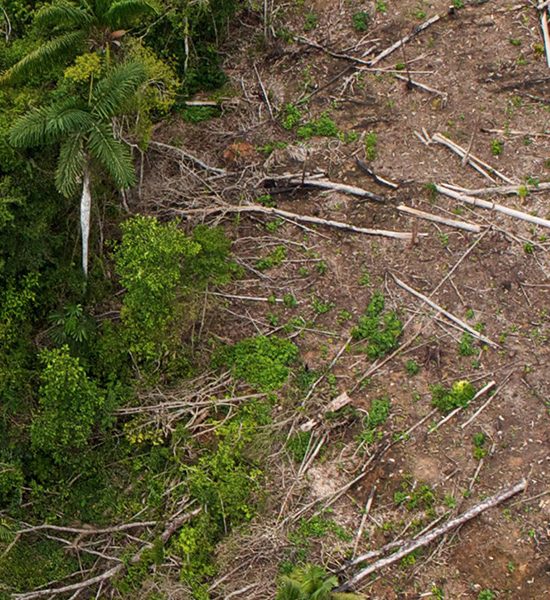
Safeguarding Lemurs in Madagascar
Support More Work Like ThisSupport More Work Like ThisCommunity engagement is crucial for the success of conservation in Madagascar as local support is needed to manage protected areas in the long-term.
-
Species at Risk
Diademed Sifaka (CR), Moss-loving Angraecum (Angraecum muscicolum-CR), Sibree’s Dwarf Lemur (CR), Andrangoloaka Bright-eyed Tree Frog (EN), Aye-aye (EN), Betsileo Bright-eyed Tree Frog (EN), Böhme’s Bright-eyed Tree Frog (EN), Cowan’s Mantella (EN), Gunther’s Digging Frog (EN), Ramanantsoa’s Dwarf Chameleon (EN)
-
Carbon stored
11,269,205 mT*
*(metric tons of CO2 equivalents) -
Partner
Madagasikara Voakajy
-
65,506 Proposed Acres Conserved by
Designation
-
Project Cost: $1,176,843

65,506
Community engagement is crucial for the success of conservation in Madagascar as local support is needed to manage protected areas in the long-term.
-
Species at Risk
Diademed Sifaka (CR), Moss-loving Angraecum (Angraecum muscicolum-CR), Sibree’s Dwarf Lemur (CR), Andrangoloaka Bright-eyed Tree Frog (EN), Aye-aye (EN), Betsileo Bright-eyed Tree Frog (EN), Böhme’s Bright-eyed Tree Frog (EN), Cowan’s Mantella (EN), Gunther’s Digging Frog (EN), Ramanantsoa’s Dwarf Chameleon (EN)
-
Carbon stored
11,269,205 mT*
*(metric tons of CO2 equivalents) -
Partner
Madagasikara Voakajy
-
65,506 Proposed Acres Conserved by
Designation
-
Project Cost: £852,784

65,506
Community engagement is crucial for the success of conservation in Madagascar as local support is needed to manage protected areas in the long-term. Recognizing this, Rainforest Trust is committed to working with partners who empower local communities, since increasing the quality of life for humans has a direct and positive impact on the health of ecosystems.
One of the largest community-focused projects supported by Rainforest Trust is in Tsinjoarivo-Ambalaomby, which is part of Madagascar’s once-continuous – but now increasingly fragmented – eastern rainforest chain which extends the length of the island. Biodiversity surveys at Tsinjoarivo have found a diverse biota unlike typical rainforests, with multiple species limited to isolated high-altitude strongholds. Species here include Critically Endangered primates such as the Sibree’s Dwarf Lemur and Diademed Sifaka, in addition to two Critically Endangered orchids known solely from Tsinjoarivo. Unfortunately, limited economic options have led to uncontrolled and unsustainable natural resource exploitation that threatens the integrity of the forest ecosystem and the species that depend on it.
While providing livelihood alternatives to land-clearing and extractive activities, Rainforest Trust and local partners Madagasikara Voakajy and SADABE seek $1,176,843 to establish permanent protection for the 65,506-acre Tsinjoarivo Protected Area. The resulting conservation success will include strict protection of a 28,065-acre core area, as well as protection of a 37,441-acre peripheral zone which will be a mixed-use landscape that includes human habitation and managed forests. In addition to the protected area creation and its sustained management, Rainforest Trust’s partners will implement socioeconomic and health programs to improve local livelihoods and the quality of life, and allow communities to be better prepared to coexist within the protected landscape.
Explore Madagascar

The Critically Endangered Diademed Sifaka courtesy of Michael Sale

The Endangered Aye-aye courtesy of Javarman

The Critically Endangered Diademed Sifaka courtesy of Frank Vassen
Biodiversity
The proposed conservation site is unique to this side of the island, as it reaches 1,650 meters above sea level and is the highest rainforest along Tsinjoarivo’s western margins. Fossil remains have shown that the high plateau was once partly forested, but now only small remnants are left, making high-altitude rainforests all the more important to protect.
The large forest block within the proposed Tsinjoarivo Protected Area represents a stronghold for species such as Critically Endangered Diademed Sifakas and Endangered Aye-ayes, which have low population densities elsewhere in Madagascar and suffer from hunting pressure. These populations found at Tsinjoarivo are likely to be adapted to high-altitude habitats; therefore, the security of the Tsinjoarivo site will protect a broader sample of the species’ genetic diversity. Because the proposed protected area encompasses various habitats, tenrecs reach the highest diversity recorded in Madagascar (17 species) due to the overlap between plateau and rainforest species. The Critically Endangered Sibree’s Dwarf Lemur is found in just three small and isolated high-altitude habitat patches, including Tsinjoarivo. The Endangered Cowan’s Mantella is currently one of the most threatened frog species in Madagascar, and Tsinjoarivo is one of just four high-altitude areas where the species occurs. There are also numerous plants which are dependent on high-altitude habitats, including two Critically Endangered orchids known solely from Tsinjoarivo. Tsinjoarivo’s unique biogeography, paired with the fact that there have not yet been extensive biodiversity surveys conducted at the site, has lead researchers to believe there is a strong chance for future endemic species discoveries within the proposed protected area.
Challenges
The main threats to conservation at Tsinjoarivo are intense poverty and rapidly increasing nearby human populations. This encroachment has caused approximately 50 percent forest loss in its western portion in just 35 years. Slash and burn forest clearing for agriculture has also negatively impacted the environment, and illegal logging provides timber for commercial sale and local use. Artisanal gold mining contributes to water pollution, and hunting (especially of lemurs and tenrecs) also occurs.
In addition, the Tsinjoarivo ecosystem is especially vulnerable to climate change because of its unique biogeographic position. Rising temperatures often cause species to migrate to lower latitudes or higher altitudes, but Tsinjoarivo’s wildlife have neither option; the remaining forest habitat is contained to the mountain ridge, as the surrounding historical forests have been lost. Effective protection and management of this remaining site will allow for the monitoring of wildlife populations likely at risk, and rapid intervention if necessary.
Communities
The proposed protected area is home to an estimated human population of 5,000, mostly a mix of Merina and Betsimisaraka ethnic groups. The vast majority of this population is found in the peripheral zone of the site, especially the western part. Like most of rural Madagascar, education and health opportunities are limited, and poverty is extreme. Household-level agriculture constitutes the majority of revenue-generating activities, specifically rice, sweet potato, cassava, corn and beans, as well as pig and chicken husbandry.
Local people will help sustain the protected area and will benefit from its establishment, as our partners are implementing economic, educational and health-related services in conjunction with the conservation project. Economic activities include introducing new and more sustainable opportunities such as fish ponds and beekeeping. Our partner will also be constructing a new secondary school, since there is no schooling option beyond primary school anywhere near these communities. In addition, our partner will focus on women and family health services, as women are the backbone of long-term community health. Protected area creation will specifically involve “management transfer” to five established local community associations, which will be responsible for long-term monitoring activities. The conservation site establishment process will also provide employment opportunities in the short-term through assistance with biodiversity surveys, demarcation and firebreaks. The community’s tangible benefits derived from creating this protected area will include partner-funded socioeconomic initiatives that will take place over a five-year period and supply materials and trainings that emphasize land use practices to maximize financial or harvest gains, while minimizing the negative impact on the landscape.
Solutions
RainRainforest Trust and our local partners seek $1,176,843 to establish legal protection for the Tsinjoarivo forest ecosystem through the creation of a 65,506-acre protected area. This process will include stakeholder workshops, boundary demarcation efforts with local communities and biodiversity surveys.
The resulting conservation success will include protection of a 28,065-acre core area in which there will be no permanent human habitation. To ensure the security of this core area, an additional 37,441-acre peripheral zone will be created which will be a mixed-use landscape that includes human habitation and managed forests. In addition to the protected area creation and its sustained management, our partners will implement socioeconomic and health programs to improve local livelihoods while stopping land-clearing and extractive activities threatening the core area.



Partnering to Save Rainforest
Our partners’ ability to work with their governments and build strong connections with local communities ensures the successful implementation of our projects.
Learn More About This PartnerLearn More About This Partner
